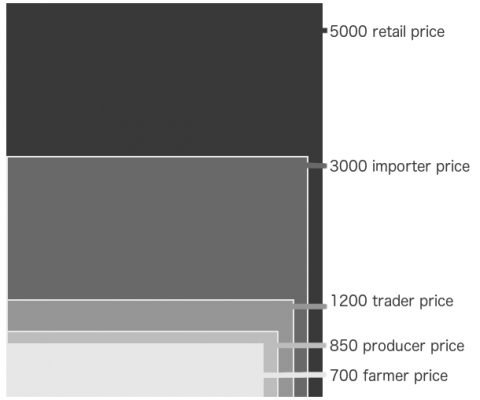These are indicative prices as they are fluctuating in the market daily. There are also different types of saffron, namely negin, pushal, and sargol. These are average saffron prices obtained from Iran.

- Retail store in importing country is selling saffron for USD 5000-8000.
- Importer/wholesaler in importing country is selling saffron for USD 3000-5000.
- Trader/broker in Iran is selling saffron for USD 1200-2000.
- Producer in Iran is selling saffron for USD 850-1500.
- Farmer in Iran is selling saffron for USD 700-1050.
Majority of saffron comes from Iran. So, it dominates the price of saffron. Saffron’s supply chain starts with a farmer and ends with a retail consumer. There are prices developed for every supply chain participant, whether you are a manufacturer, trader, importer, retail store, or a consumer.
The price is determined by the supply and demand, and currency exchange rate. Weather conditions play a big role. If there is too much, or too little rain the yield will be small. This means the demand will be higher than the supply, and people are willing to contest for the saffron. They are willing to pay more. In long term there are other factors as minimum wage, technology, marketing costs, import tariffs, population growth, etc.
Saffron is produced with costs in local currency (for instance Iranian Rial, and Afghanistan Afghani). However, when you import saffron from the country such as Iran, or Afghanistan, you have to take into account the currency exchange rate between importing country and producer’s country. For instance, when are getting more Iranian Rial’s for one USD (Rial is getting cheaper), the price of saffron should drop in USA as well.
WANT TO BUY SAFFRON IN BULK?
